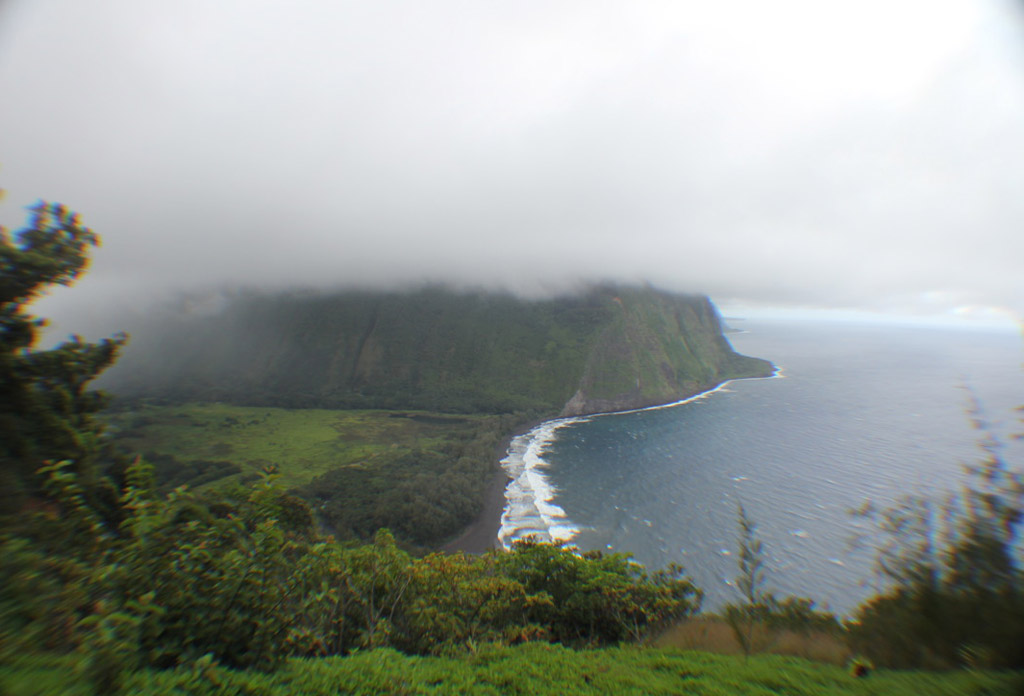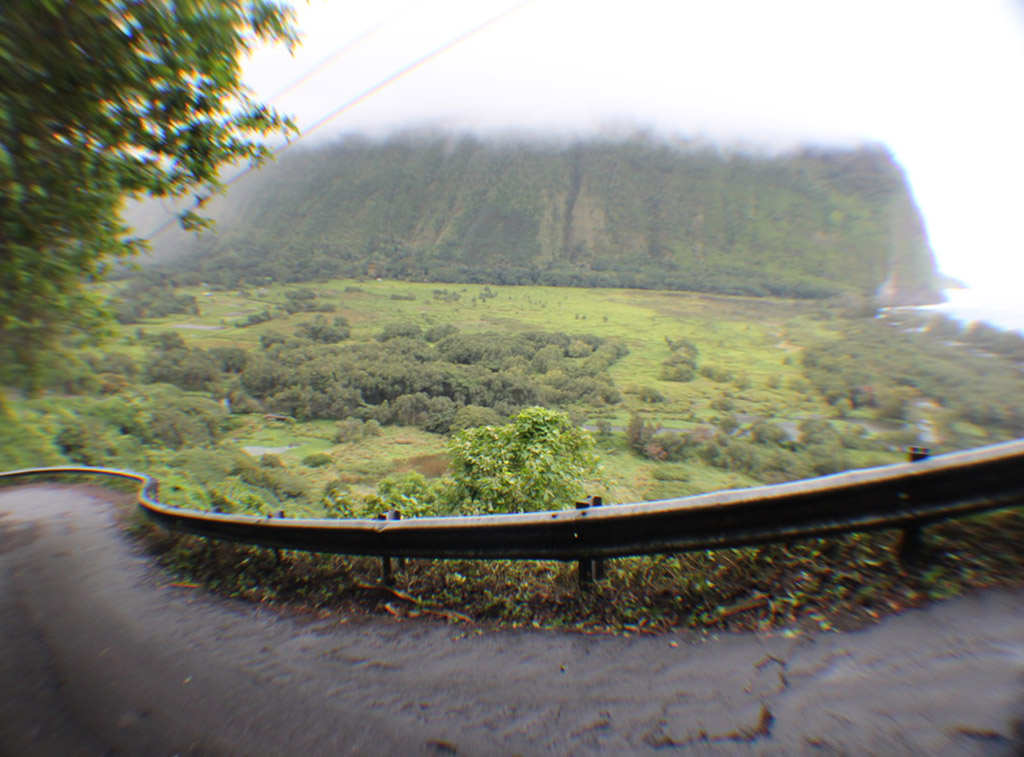
Located in the north on the border between Hamakua and Kohala is a valley that many will recognize from posters and magazines – the picturesque Waipio Valley.
Waipio is arguably Big Island’s grandest valley, with a black sand beach at the front and two large waterfalls at the back. Waipio is extremely lush and famed for its agricultural productivity. It was once said that the entire population of the island could be sustained by the output of this
valley if crops and livestock failed everywhere else.
This is a place filled with history as well. It was in this valley that Kamehameha the Great received his War God which sparked his conquest to unite all the islands under his rule. In 1823 the first non-Hawaiians arrived in Waipio and reportedly found a thriving population of more than 50,000 people living off the valley’s rich harvest.
Today Waipio’s population is only a few dozen. Many of the residents left after the 1946 tsunami that destroyed much of Hilo also wiped out the majority of the valley’s buildings. Lack of electricity and the extremely steep valley road have kept most people living topside.

As you arrive at Waipio you’ll come to a parking lot attached to the overlook. From here you can see most of the valley and the entire beach and mountains adjacent. To get to the valley floor 900 feet below you descend 3/4 of a mile down an extremely steep road carved into the mountainside. Those with a reliable 4WD vehicle can drive down the road (it’s not for the faint of heart), but most choose to park at the top and walk down. There are several trails out of the valley, but if you’re only planning a day hike coming back up this road will be the most strenuous part of your day. Once you arrive at the valley floor it’s relatively flat. You can turn right and head to the beach or you can turn left and explore the back of the valley. Most of the land in the back is privately owned, so if you venture back here respect local private property. There’s a trail to Hiilawe Falls, the larger waterfall at the back, accessed from the valley road shortly after you cross the stream (which flows right over the pavement). You’ll see a sign marking the trailhead on the left and from there it’s about 2 miles over jungle and river terrain. This trail goes right through the stream at several points and may require some swimming if it’s been raining. It rains daily in Waipio so if you plan on hiking to the waterfall at the back be prepared to be drenched by the time you get there. On this trail you’ll find a myriad of wild island fruit growing including oranges, papaya, mango, coconuts, wild coffee, breadfruit, bananas, guava, and lillikoi.
The beach here is thunderous and impressive. Due to the extreme depth change just offshore the waves are large and dangerous shorebreak prohibits swimming. It’s still extremely picturesque, nestled between the 900 foot steep valley walls. You’ll find trash cans, toilets, and picnic tables here. Those more adventurous can continue along this trail beyond the beach and either to the left to reach Nanaue Falls 2 miles further, or stright ahead up the clearly visible snakepath and into Waimanu valley, a considerably larger undertaking at 9 miles each way.
To appreciate Waipio one should allow at least 2-3 hours if visiting the beach, and a full day if visiting either of the waterfalls as well. There is no potable water in Waipio, so make sure you pack plenty of it before going in. It rains daily in the valley, usually in the afternoon and it’s
heaviest in the back. Sturdy waterproof footwear and raingear are essential if you’re headed for either waterfall.
Why go to Waipio Valley?
To experience the largest, lushest valley on the island, waterfalls and a black sand beach. Waipio is truly one of Big Island’s gems.
